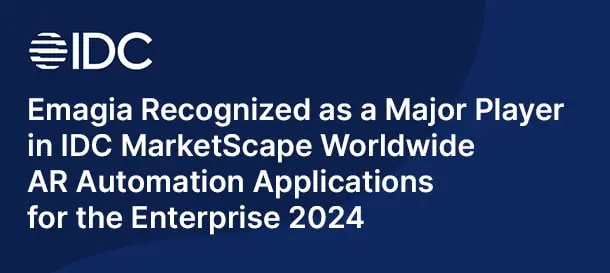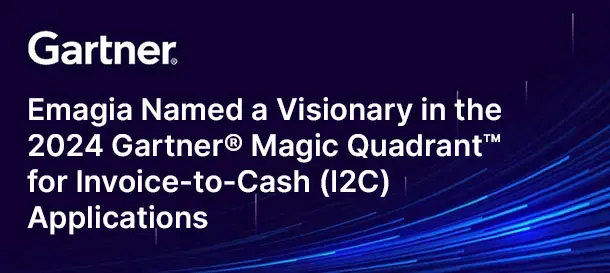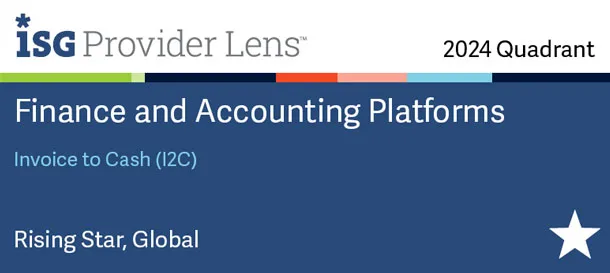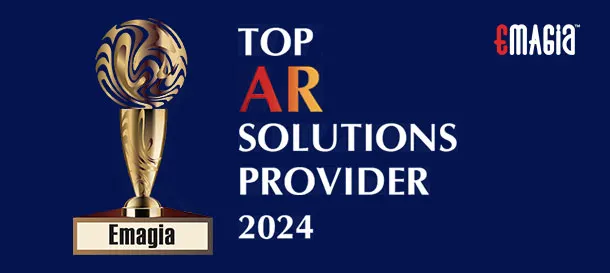Cash in Advance (CIA) is a payment term commonly used in high-risk transactions. It ensures that sellers receive payment before shipping the goods or delivering services. For businesses, understanding how CIA works and its implications can be crucial for financial stability and risk management.
What is Cash in Advance (CIA)?
Cash in Advance is a payment arrangement where the buyer pays for goods or services upfront, before the seller fulfills the order. This method is typically used in transactions involving new buyers, high-value orders. A cash in advance example would be an online purchase where you pay with your credit card before the item is shipped. This is the simplest and most secure payment term for the seller, as it eliminates the risk of non-payment entirely. When you hear paid in advance or payment in advance terms, it’s essentially referring to this method.
How Does Cash in Advance Work? A Step-by-Step Guide
- Agreement: The seller and buyer agree on the terms, including the total amount and the specific payment schedule. This initial negotiation sets the stage for the advance payment meaning.
- Payment: The buyer transfers the full payment through an agreed-upon method, such as a bank transfer, a secure online payment platform, or even a direct deposit. This is where the money in advance changes hands.
- Order Fulfillment: Once the seller receives the payment and verifies its clearance, they proceed with shipping the goods or providing the service. This confirmation of the receipt of cash in advance from a customer is critical.
- Delivery Confirmation: The seller ensures the buyer receives the order as per the agreement, completing the transaction. This step solidifies the trust built through the upfront payment.
Advantages of Cash in Advance: Benefits for Sellers
- Risk Reduction for Sellers: The primary benefit in advance for sellers is the complete elimination of non-payment risk. Since payment is received upfront, there’s no need for collection efforts or concerns about bad debt. This is what cash advance define for the seller – security.
- Cash Flow Management: Immediate payment significantly improves a seller’s cash flow, enabling better financial planning, inventory management, and operational stability. This direct influx of cash on advance can be transformative for a business.
- Simplified Transactions: CIA negates the need for credit checks or complex financing arrangements, streamlining the sales process. The simplicity is a major advance advantage.
- Reduced Administrative Burden: With no accounts receivable to manage for these transactions, administrative tasks related to invoicing, collections, and reconciliation are minimized.
- Stronger Negotiation Position: Sellers can leverage the security of CIA to offer better pricing or faster delivery, as their financial risk is covered.
Challenges of Cash in Advance: Considerations for Buyers
- Buyer Hesitation: Requiring payment in advance terms can discourage potential buyers, especially new customers or those unfamiliar with the seller, due to trust concerns. This is a significant hurdle in competitive markets.
- Competitive Disadvantage: Businesses insisting solely on CIA may lose out to competitors offering more flexible payment terms, such as credit or partial payments. This impacts market share and customer acquisition.
- Potential for Fraud: While safer for sellers, buyers face the risk of not receiving goods or services as promised after making an advance payment. This concern is particularly prevalent in cross-border transactions or with unverified sellers.
- Cash Flow Strain for Buyers: Paying upfront can strain a buyer’s working capital, especially for large orders, impacting their own financial liquidity. This is a common concern when considering paying in advance.
- Lack of Recourse: If goods are faulty or not delivered, retrieving an advance payment can be a lengthy and challenging process for the buyer.
Common Scenarios for Using Cash in Advance Effectively
- High-Risk Markets: When selling to countries with unstable economies, volatile currencies, or high political risk, CIA provides essential protection. This is a prime example of where payment terms advance payment are preferred.
- Custom Products and Services: For goods made to order or highly customized services, requiring money in advance reduces the risk of non-payment for specialized items that may be difficult to resell.
- Unverified Buyers: Transactions with new customers who have no established credit history or are deemed high-risk are ideal for CIA. This safeguards against potential defaults from credible advance requests.
- Small Businesses and Startups: For smaller entities with limited capital and less robust credit departments, CIA offers a crucial layer of financial security.
- High-Value Orders: For significantly large transactions, cash in advance definition helps mitigate substantial potential losses.
- Online Retail and E-commerce: The very nature of online sales often involves upfront payment, making CIA a default. This is where advancecash login and similar platforms facilitate the process.
Alternatives to Cash in Advance: Exploring Flexible Payment Options
- Letter of Credit (LC): A bank guarantees payment to the seller upon presentation of specified documents, balancing risk for both parties. This offers a middle ground between open account and what is advanced cash.
- Partial Advance Payment: The buyer pays a percentage upfront (e.g., 25% or 50%) and the balance upon delivery or completion. This shares the risk and can be more palatable for buyers than full CIA.
- Open Account: Payment is made after delivery, typically used with trusted buyers and established business relationships. This carries the most risk for the seller but offers maximum flexibility for the buyer.
- Cash Against Documents (CAD): The buyer pays upon receipt of shipping documents, typically through a bank, giving the buyer some control while ensuring the seller gets paid before the goods are released.
- Consignment: The seller ships goods to the buyer, but the buyer only pays once the goods are sold. The seller retains ownership until the sale occurs.
- Trade Finance Solutions: This includes options like export factoring, forfaiting, or export credit insurance, which can help mitigate seller risk without requiring full upfront payment from the buyer.
- Buy Now, Pay Later (BNPL) for B2B: Emerging solutions allow businesses to spread out payments, offering flexibility to buyers while ensuring sellers receive payment quickly from the BNPL provider.
Tips for Implementing Cash in Advance Strategically
- Set Clear Terms: Outline payment methods, timelines, and penalties for delays in a clear, concise contract. Transparency builds trust and avoids misunderstandings about cash advance def.
- Build Trust: For new buyers, use secure and reputable payment platforms. Provide references, case studies, or even offer smaller initial transactions to establish a credible advance relationship.
- Maintain Transparency: Communicate proactively about order status, production timelines, and delivery schedules. Regular updates reassure buyers after they’ve made an advance payment definition.
- Offer Incentives: Discounts for upfront payment or expedited delivery can encourage buyers to choose CIA. This makes the advance advantage appealing to them too.
- Utilize Technology: Implement robust invoicing and payment processing systems to ensure smooth transactions and immediate payment confirmation.
- Educate Buyers: Clearly explain the benefits of CIA for both parties, particularly how it enables the seller to commit resources and deliver promptly.
- Consider Hybrid Models: For larger or long-term projects, combine CIA with other payment terms, such as milestone payments or partial upfront payments followed by an open account for subsequent phases.
Cash in Advance vs. Cash on Delivery (COD)
Understanding the distinction between cash in advance and cash on delivery (COD) is crucial. With CIA, payment is made before the goods are shipped or services rendered. This puts the risk squarely on the buyer, as they have paid but not yet received the item. Conversely, with COD, payment is made at the time of delivery. This shifts the risk more towards the seller, who bears the cost of shipping and the potential for non-acceptance by the buyer. While CIA offers maximum security for the seller, COD often provides more comfort to the buyer, especially for physical goods.
Cash in Advance in Various Industries: Who Uses It?
While often associated with international trade, Cash in Advance is prevalent in several other industries. This cash advice can be applied widely:
- Custom Manufacturing: For bespoke products where raw materials are purchased and labor is expended based on a specific order, CIA ensures the seller doesn’t bear the risk of a cancelled or unpaid custom item.
- Software Development & Consulting: Many service-based businesses require upfront payments for project initiation, especially for new clients or large-scale endeavors, ensuring commitment and covering initial resource allocation.
- High-Value Niche Services: Industries dealing with unique or specialized services, where client commitment is paramount, often use CIA.
- Online Retail (e-commerce): As mentioned, most online transactions are inherently paying in advance, with credit card payments processed before shipping.
- Event Planning: Organizers often require upfront deposits or full payments to secure venues, vendors, and entertainment.
- Publishing: Authors or clients may pay an advance payment to publishers for book production or editorial services.
The Concept of a Cash Advance in Finance
It’s important to differentiate Cash in Advance (payment for goods/services upfront) from a cash advance (a short-term loan). A cash advance is typically a feature of a credit card, allowing the cardholder to withdraw cash against their credit limit. This often comes with higher interest rates and fees, with interest accruing immediately. Moves cash advance refers to the act of taking such a loan. Similarly, advance payment generally refers to payment for a product or service, whereas a cash advance (in the financial sense) is a direct loan of money. Understanding the cash advance definition in both contexts prevents confusion.
Payable in Advance: Understanding the Terms
The term payable in advance simply indicates that the payment is due before the product or service is provided. This is a clear contractual term that signifies the seller’s requirement for upfront payment. It leaves no ambiguity about the payment in advance meaning. This term is fundamental in contracts where the seller needs to secure their investment or mitigate risk before fulfilling the order. It’s a common phrase you’ll encounter in proposals, invoices, and purchase agreements that stipulate upfront payment.
How Emagia Helps Businesses Optimize Payment Processes
Emagia, a leader in AI-powered Order-to-Cash (O2C) solutions, empowers businesses to streamline and secure their payment processes, including those involving Cash in Advance. While CIA itself is about receiving payment upfront, Emagia’s advanced platform can significantly enhance the efficiency and accuracy of subsequent financial operations. Here’s how:
- Intelligent Cash Application: Emagia’s AI-powered Cash Application module automates the matching of incoming payments to open invoices with unparalleled accuracy, even for complex remittances. For businesses receiving numerous upfront payments, this drastically reduces manual effort and accelerates cash posting to ERP systems. This means quicker reconciliation of cash of advance received.
- Enhanced Cash Flow Visibility and Forecasting: By integrating data from various financial systems and leveraging AI, Emagia provides real-time insights into cash flow. This allows businesses to accurately track and forecast their liquidity, making it easier to manage funds received as money in advance and allocate resources effectively.
- Streamlined Dispute Resolution: In cases where an upfront payment might lead to a post-delivery dispute (e.g., goods not as described), Emagia’s platform can automate deduction coding and facilitate rapid resolution, minimizing revenue leakage and maintaining customer satisfaction.
- Secure and Integrated Payment Processing: While not directly processing the initial payment in advance, Emagia’s integrations with various banking and payment platforms ensure that once funds are received, they are seamlessly recorded and managed within the O2C cycle.
- Risk Management and Credit Automation: Emagia’s comprehensive suite includes credit and risk management tools. While CIA reduces buyer risk for a specific transaction, Emagia helps in overall risk assessment for future deals and in managing a diverse portfolio of payment terms.
By automating and optimizing key financial processes, Emagia helps businesses gain greater control over their cash flow, reduce operational costs, and make more informed financial decisions, ultimately transforming their order-to-cash operations for increased profitability and efficiency.
FAQs About Cash in Advance
1. Is Cash in Advance safe for sellers?
Yes, Cash in Advance is highly safe for sellers as it ensures payment is received before goods are shipped or services are delivered, effectively eliminating the risk of non-payment.
2. Can buyers trust Cash in Advance transactions?
Buyers should exercise caution and work with reputable sellers, especially in new relationships. Using secure payment methods and verifying the seller’s credibility can minimize risks for buyers when making an advance payment.
3. What payment methods are commonly used for Cash in Advance?
Common payment methods for Cash in Advance include bank transfers (wire transfers), credit cards, and online payment platforms like PayPal or Stripe. The choice often depends on the transaction amount and the parties’ locations.
4. Does Cash in Advance apply to all industries?
While particularly common in international trade, custom manufacturing, and e-commerce, Cash in Advance can be applied in any industry where sellers want to secure payment upfront, especially for high-risk transactions or with unverified buyers.
5. How can small businesses use Cash in Advance effectively?
Small businesses can leverage CIA effectively by clearly communicating terms, building trust through transparency and references, offering incentives like discounts for upfront payment, and maintaining proactive communication regarding order fulfillment and delivery. This makes cash advice actionable.
6. What’s the main difference between Cash in Advance and Cash on Delivery (COD)?
The main difference is the timing of payment: Cash in Advance requires payment before goods are shipped, while Cash on Delivery requires payment upon receipt of the goods.
7. What is a credible advance?
A credible advance generally refers to an upfront payment made to a reputable and trustworthy entity, where the buyer has confidence in receiving the goods or services as promised. It implies a level of trust built between the parties.
8. What is the meaning of advance payment?
Advance payment simply means that payment is made ahead of time, before the product or service is fully delivered or completed. This is the core pay in advance meaning.
9. Are there any hidden fees with Cash in Advance?
While CIA itself doesn’t typically involve hidden fees from the seller’s side, the chosen payment method (e.g., bank transfer fees, credit card processing fees) might incur charges. Buyers should be aware of these cash advance commercial related costs.
10. What are the legal implications of a payable in advance clause?
A payable in advance clause legally obligates the buyer to remit payment before the seller performs their part of the contract. It’s a fundamental term that establishes the sequence of obligations and protects the seller’s financial interests.
Conclusion: Leveraging Cash in Advance for Secure Transactions
Cash in Advance is a robust payment method that offers significant security to sellers, particularly in high-risk or custom-order scenarios. While it presents certain challenges for buyers, strategic implementation, coupled with transparency and trust-building measures, can make CIA a viable and effective option. By understanding its nuances, advantages, disadvantages, and alternatives, businesses can leverage cash in advance to protect their interests, manage cash flow efficiently, and ensure smooth and secure transactions in today’s dynamic global marketplace. For both sellers and buyers, clear communication and a focus on building long-term relationships remain paramount, regardless of the payment terms.



